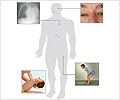Diagnosis
Children with Von Gierke Disease are usually diagnosed before the age of one. A proper physical examination and detailed history points to the diagnosis.
The clinical features described in the previous section mandate a number of blood tests and imaging.
Some of the tests include: Blood glucose, blood pH (to measure acidity), kidney function tests, complete blood count (to find anemia, low neutrophil counts etc.), serum electrolytes, urine albumin, liver function tests (liver enzymes are usually normal), blood coagulation profile, cholesterol levels, and bone density measurement.
Imaging: Ultrasound imaging of the abdomen to investigate the enlarged liver (hepatomegaly), and assess the kidney for complications. In females, ultrasound may reveal polycystic ovaries (please refer to the section on Complications).
Definitive diagnosis of Von Gierke Disease is by liver biopsy (examination of liver tissue), and assay of enzyme (glucose-6-phosphatase) activity. Gene testing, a recently available test that can detect mutations, provides a non-invasive technique for definitive diagnosis.






